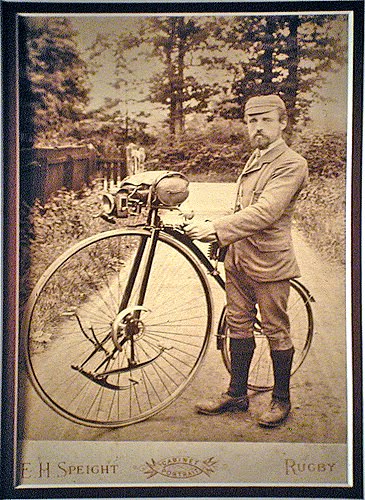As mentioned last time, I've spent my shedweek making the front mounts.
I've never seen front mounts like these before.
They match the catalogue illustrations, so clearly the original saddle and worth copying.
These are tricky little blighters with lots of angles and sticky out bits and holes and stuff. After a little planning (read trigonometry) I calculated that I could just get them out of a piece of 1 1/8" bar stock if I was careful and had a bit of a tailwind. The mounts have angled holes and faces in multiple planes which means that I need to machine the containing shape out accurately before drilling and tapping the relevant holes. Only when this is done can I then smooth out the angles and make them appear more organic. The originals would have been castings with very little clean up.
My new milling machine got an extensive trial this week, I'm still learning the best way to use it with the tooling I have available to me. Also I spent quite a considerable period of time making the thing run a bit more quietly. This is a known issue with the Mk1 Dore Westbury mills. They have an epicyclic gearbox that uses straight cut Myford change gears that are noisy in use.
Initially I machined the angled flats by using a Myford swivelling vertical slide, but after a period of time I realised that I could get the same results with more rigidity if I just used a machine vice and set up the work with a combination square with a protractor head.
A series of photos will illustrate the process as usual.
Mill flats on either side of the bar stock.
Mill the angled faces using the swivelling slide.
And again.
Before I ditched the swivelling slide due to clearance issues
and just used a combination square to set the angles.
Mill another flat on the side.
Mark out and cut the two halves.
And now mill faces in the other plane.
Hacksaw off some excess...
... before milling to size.
All the faces are now done, so I can drill and tap the
holes at the correct locations and angles.
Starting to clean up with a file.
Beginning to take shape.
A little more thinning is still needed before I'm happy.
In other news, the whanau have left me and gone to visit relies in Australia for the week, Whilst they have gone we have had 30+ degree days and bush fires. Honestly what has 'stralia got that you can't get right here in Canterbury. A few weeks ago I even saw a wallaby at the side of the road as I was cycling home. It was just at the Tram Road and Northern Motorway intersection. I know that they occur down in South Canterbury but I never seen one this far North before. I know for certain that it was a wallaby because I was able to watch it for a long time without it running off. In fact I would have been greatly surprised if it had run off since it was dead. I looked it up and apparently it is a Red Necked or Bennett's Wallaby. It is of course possible that it was killed down South and inadvertently or otherwise carried North. It wasn't there the next day so it was probably just resting or something.











































